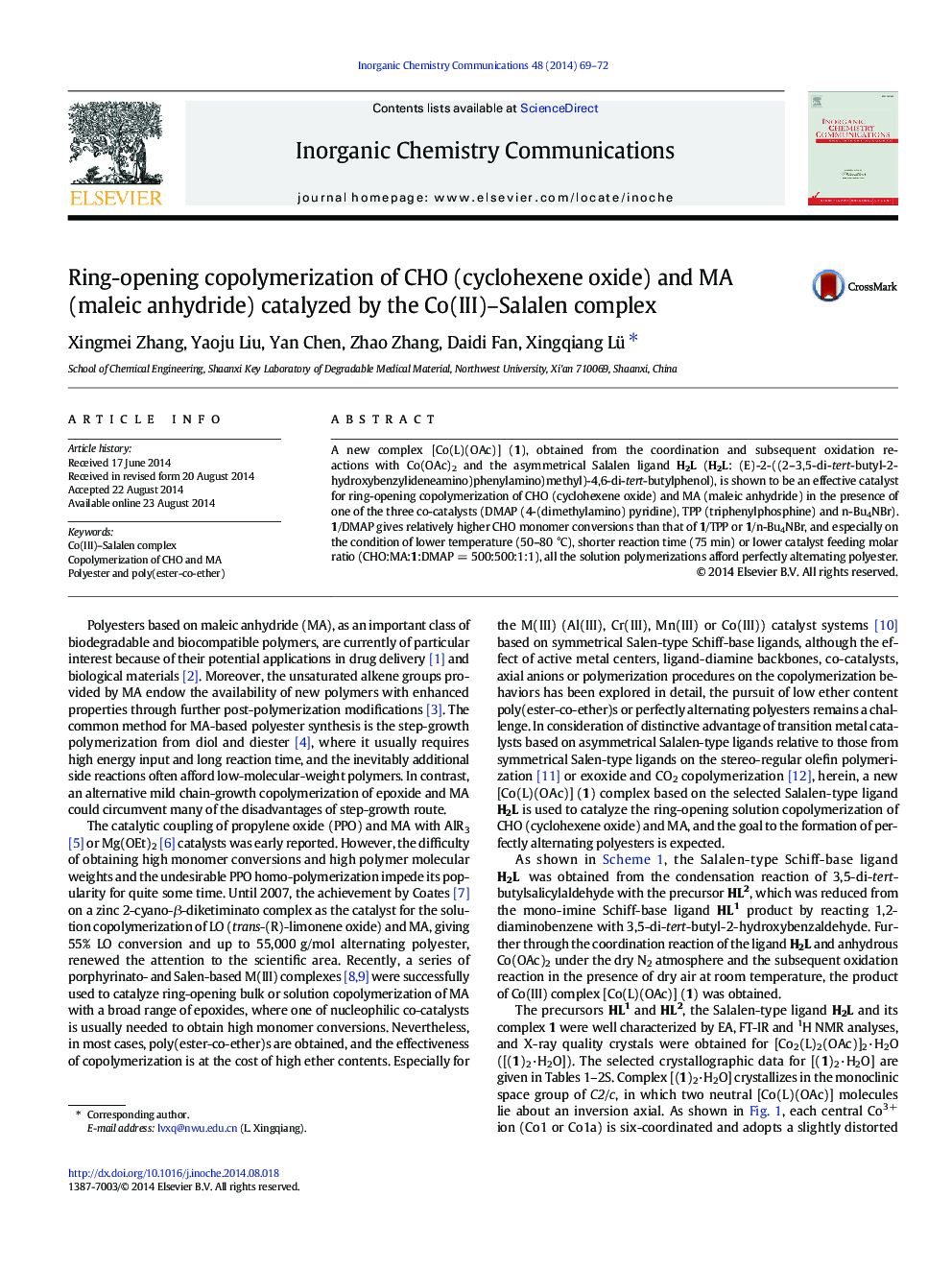| Article ID | Journal | Published Year | Pages | File Type |
|---|---|---|---|---|
| 1303675 | Inorganic Chemistry Communications | 2014 | 4 Pages |
•Asymmetrical Co(III)–Salalen complex•Ring-opening solution copolymerization of CHO and MA•Alternating polyester or poly(ester-co-ether)
A new complex [Co(L)(OAc)] (1), obtained from the coordination and subsequent oxidation reactions with Co(OAc)2 and the asymmetrical Salalen ligand H2L (H2L: (E)-2-((2–3,5-di-tert-butyl-2-hydroxybenzylideneamino)phenylamino)methyl)-4,6-di-tert-butylphenol), is shown to be an effective catalyst for ring-opening copolymerization of CHO (cyclohexene oxide) and MA (maleic anhydride) in the presence of one of the three co-catalysts (DMAP (4-(dimethylamino) pyridine), TPP (triphenylphosphine) and n-Bu4NBr). 1/DMAP gives relatively higher CHO monomer conversions than that of 1/TPP or 1/n-Bu4NBr, and especially on the condition of lower temperature (50–80 °C), shorter reaction time (75 min) or lower catalyst feeding molar ratio (CHO:MA:1:DMAP = 500:500:1:1), all the solution polymerizations afford perfectly alternating polyester.
Graphical abstractThrough self-assembly of Co(OAc)2 with the asymmetrical Salalen ligand H2L ((E)-2-((2–3,5-di-tert-butyl-2-hydroxybenzylideneamino)phenylamino)methyl)-4,6-di-tert-butylphenol), the new Co(III) complex [Co(L)(OAc)] (1) was obtained. Its catalytic properties showed that the effective ring-opening solution copolymerizations of CHO (cyclohexene oxide) and MA (maleic anhydride) in the presence of one of the three co-catalysts (DMAP (4-(dimethylamino) pyridine), TPP (triphenylphosphine) and n-Bu4NBr) were obtained, in which, especially, 1/DMAP gave relatively higher CHO monomer conversion, and the polymerization condition control on lower temperature (50–80 °C), short reaction time (75 min) or lower catalyst feeding molar ratio (CHO:MA:1:DMAP = 500:500:1:1) is in favor of the formation of perfectly alternating polyesters.Figure optionsDownload full-size imageDownload as PowerPoint slide
